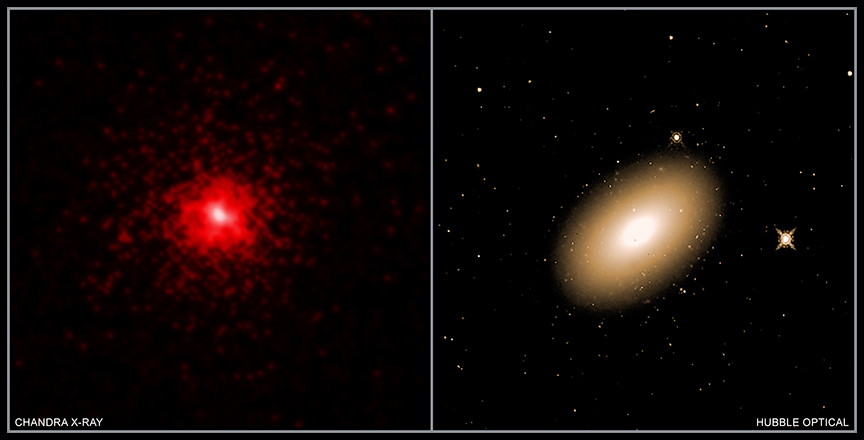Ancient Galaxy in the 'Sea Serpent' Has More Dark Matter Than Expected
X-ray observations of a peculiar galaxy deep within the constellation Hydra (the Sea Serpent) have revealed more dark matter at its core than expected.
The galaxy is almost as old as the universe itself, representatives from NASA's Chandra X-Ray Observatory said in a statement published Monday (June 3). This celestial body, Markarian 1216, went through a different evolution than typical galaxies and is home to stars that are within 10% of the age of the universe.
To study the dark matter within this compact, elliptically shaped galaxy about 295 million light- years from Earth, researchers conducted new observations with the Chandra spacecraft. Markarian 1216 is packed with more dark matter in its core than researchers expected, according to their findings published June 1.
Related: 4 Dark Matter Searches to Watch in 2019

Dark matter is like the invisible puppeteer of the universe: Astronomers see the movement of baryonic matter (protons and neutrons) and can indirectly detect that something is acting upon the more massive configurations, like stars and galaxies — but little is known about the dark matter itself.
If Markarian 1216 descended from "red nuggets," the reddish, compact galaxies that formed a billion years after the Big Bang that later stopped growing, the researchers said, the dark matter in this galaxy should be tightly packed, too. To test this idea, two astronomers studied the X-ray brightness and temperature of hot gas at different distances from this galaxy's core to effectively weigh the dark matter..
"When we compared the Chandra data to our computer models, we found a much stronger concentration of dark matter was required than we find in other galaxies of similar total mass," David Buote, a researcher at University of California at Irvine and co-author of the study said in the statement.
Get the Space.com Newsletter
Breaking space news, the latest updates on rocket launches, skywatching events and more!
Some scientists wonder whether dark matter exists at all since it has never been observed directly. But this paper seems to provide another leg for dark matter to stand on. Buote and university colleague Aaron Barth chose to interpret the Chandra data using two separate models — the standard model of gravity and MOND (Modified Newtonian Dynamics), which accounts for mass discrepancies in the universe without including dark matter in certain types of galaxies — and found that both theories required the same amount of dark matter at Markarian 1216's center.
"In the future we hope to go a step further and study the nature of dark matter," Buote said. '"The dense accumulation of dark matter in the middle of Mrk 1216 may provide an interesting test for non-standard theories that predict less centrally concentrated dark matter, such as for dark matter particles that interact with each other by an additional means other than gravity."
The new work was detailed June 1 in The Astrophysical Journal, and can be read in full on ArXiv.org.
- Do Not Fear the Dark Matter Hurricane (The Dark Matter Hurricane Is Good)
- Supermassive Black Holes Likely Born in 'Halos' of Dark Matter
- Is Dark Matter Fuzzy?
Follow Doris Elin Salazar on Twitter @salazar_elin. Follow us on Twitter @Spacedotcom and on Facebook.
Join our Space Forums to keep talking space on the latest missions, night sky and more! And if you have a news tip, correction or comment, let us know at: community@space.com.

Doris is a science journalist and Space.com contributor. She received a B.A. in Sociology and Communications at Fordham University in New York City. Her first work was published in collaboration with London Mining Network, where her love of science writing was born. Her passion for astronomy started as a kid when she helped her sister build a model solar system in the Bronx. She got her first shot at astronomy writing as a Space.com editorial intern and continues to write about all things cosmic for the website. Doris has also written about microscopic plant life for Scientific American’s website and about whale calls for their print magazine. She has also written about ancient humans for Inverse, with stories ranging from how to recreate Pompeii’s cuisine to how to map the Polynesian expansion through genomics. She currently shares her home with two rabbits. Follow her on twitter at @salazar_elin.









